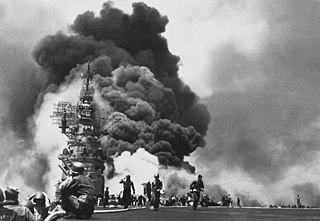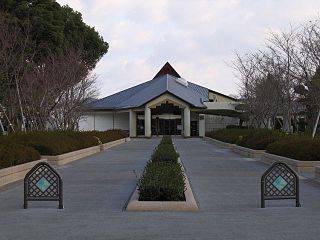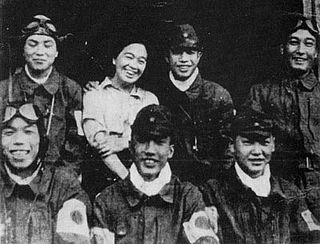 W
WKamikaze , officially Shinpū Tokubetsu Kōgekitai , were a part of the Japanese Special Attack Units of military aviators who flew suicide attacks for the Empire of Japan against Allied naval vessels in the closing stages of the Pacific campaign of World War II, intending to destroy warships more effectively than with conventional air attacks. About 3,800 kamikaze pilots died during the war, and more than 7,000 naval personnel were killed by kamikaze attacks.
 W
WThe 72nd Shinbu Squadron of the Imperial Japanese Army Air Force was formed on January 30, 1945, as the 113 Educational Flight Corps. On March 30 of the same year the unit gained its final name, the 72nd Shinbu Squadron.
 W
WBansei Tokkō Peace Museum is a war museum in Minamisatsuma, Kagoshima Prefecture. Opened in 1993, the museum commemorates the 201 airmen from the Bansei Air Base (万世飛行場) who died in a kamikaze attack in the final months of the Pacific War. Hichiro Naemura, a flight instructor at the Bansei base in 1945, spearheaded the effort to establish this institution as a memorial to his fallen comrades.
 W
WThe airbase at Chiran, Minamikyūshū, on the Satsuma Peninsula of Kagoshima, Japan, served as the departure point for hundreds of Special Attack or kamikaze sorties launched in the final months of World War II. A peace museum dedicated to the pilots, the Chiran Peace Museum for Kamikaze Pilots , now marks the site.
 W
WOperation Kikusui was a series of suicidal air attacks by Imperial Japanese forces during the Battle of Okinawa against Allied fleets in the waters around Okinawa, as part of Operation Ten-Go. The name of the operation, "Kikusui", comes from the hata-jirushi of the samurai Kusunoki Masashige.
 W
WTakijirō Ōnishi was an admiral in the Imperial Japanese Navy during World War II who came to be known as the father of the kamikaze.
 W
WA radar picket is a radar-equipped station, ship, submarine, aircraft, or vehicle used to increase the radar detection range around a nation or military force to protect it from surprise attack, typically air attack, or from criminal activities such as smuggling. By definition a radar picket must be some distance removed from the anticipated targets to be capable of providing early warning. Often several detached radar units would be placed to encircle a target to provide increased cover in all directions; another approach is to position units to form a barrier line.
 W
WSuicide by pilot is an aviation event in which a pilot deliberately crashes or attempts to crash an aircraft in a suicide attempt, sometimes to kill passengers on board or people on the ground. This is sometimes described as a murder–suicide. It is suspected as being a possible cause of the crashes of several commercial flights and is confirmed as the cause in others. Generally, it is difficult for crash investigators to determine the motives of the pilots, since they sometimes act deliberately to turn off recording devices or otherwise hinder future investigations. As a result, pilot suicide can be difficult to prove with certainty.
 W
WTome Torihama (June 20, 1902 – April 22, 1992)was the owner of a restaurant called "Tomiya Shokudo" in Kagoshima that served kamikaze pilots before they flew off to war. She is called the "Mother of Kamikazes".
 W
WThe Yokosuka MXY-7 Ohka was a purpose-built, rocket-powered human-guided kamikaze attack aircraft employed by Japan against Allied ships towards the end of the Pacific War during World War II. Although extremely fast, the very short range of the Ohka meant that it had to be carried into action as a parasite aircraft by a much larger bomber, which was itself vulnerable to carrier-borne fighters. In action during the Battle of Okinawa in 1945, Ohkas were able to sink or damage some escort vessels and transport ships but no major warships were ever hit. Improved versions which attempted to overcome the aircraft's shortcomings were developed too late to be deployed. The Allied reporting name for the Ohka was "Baka".